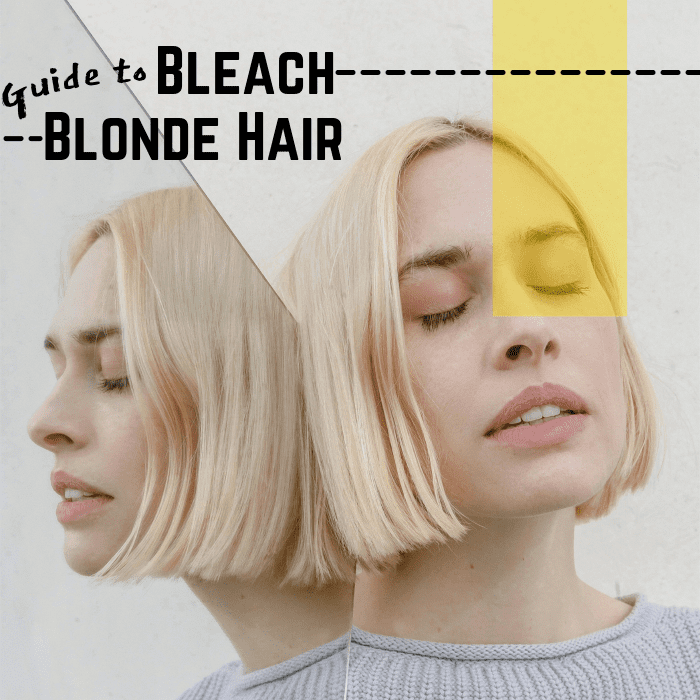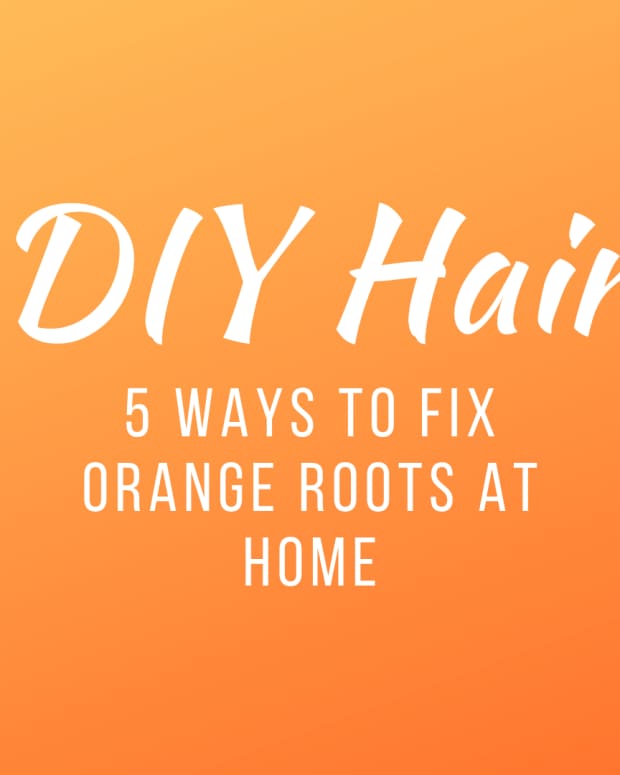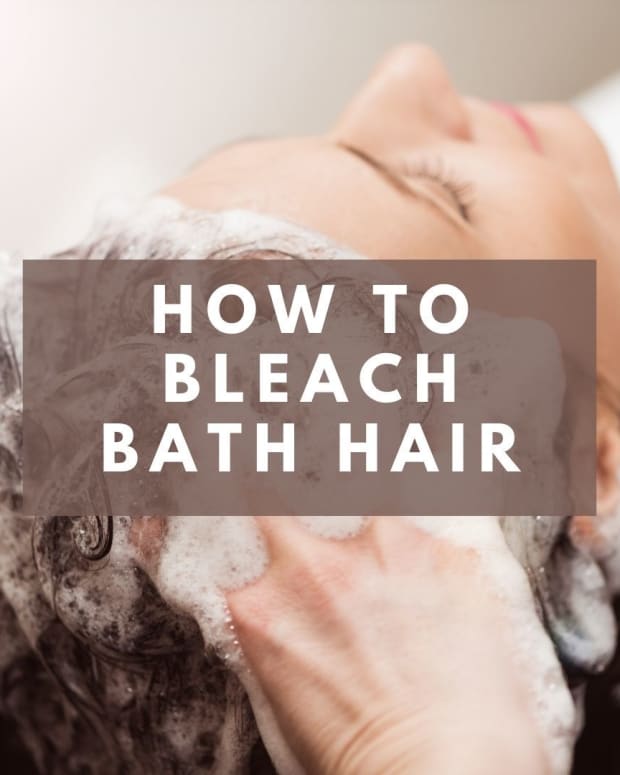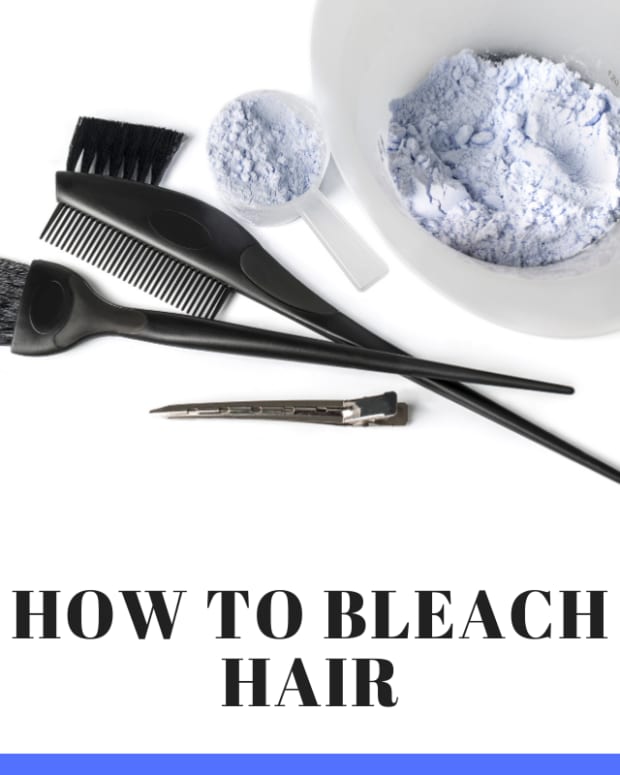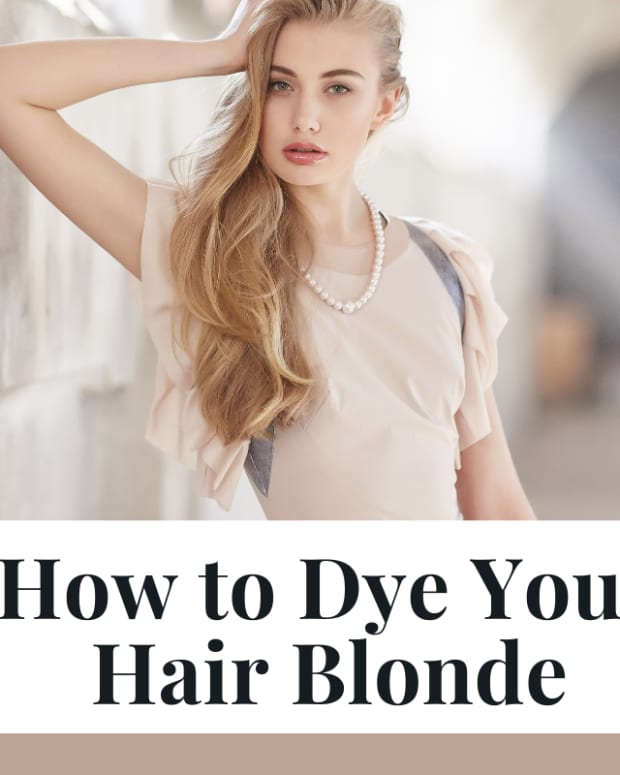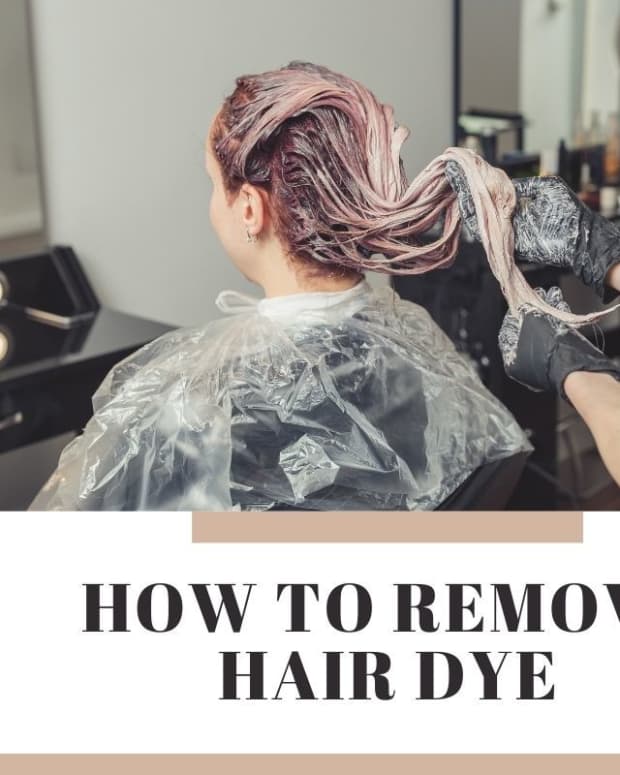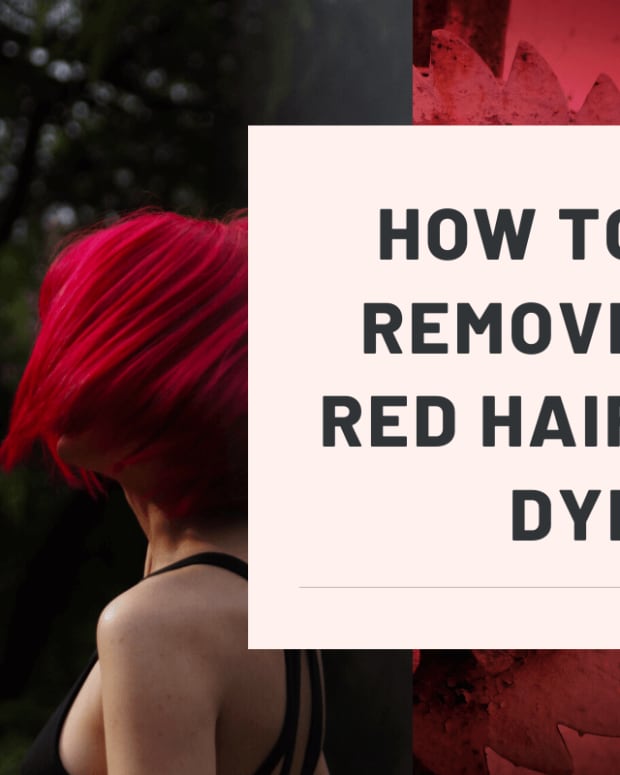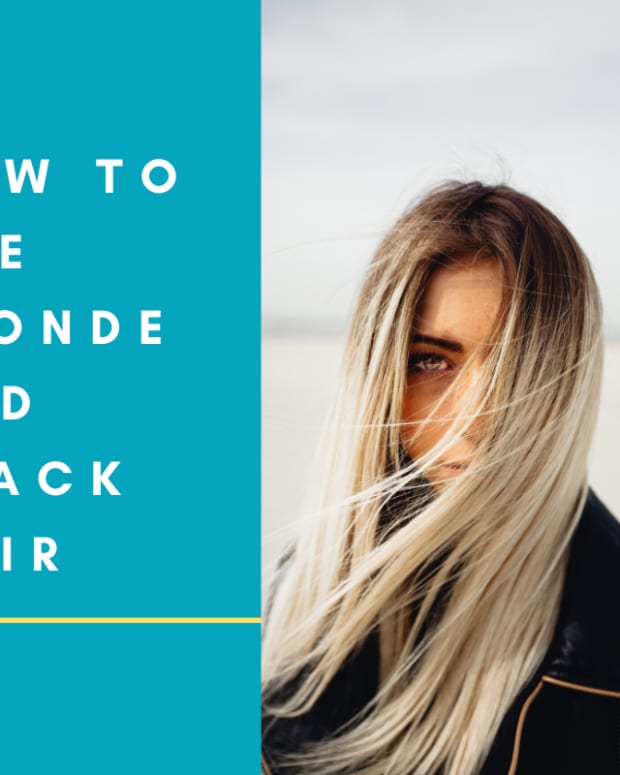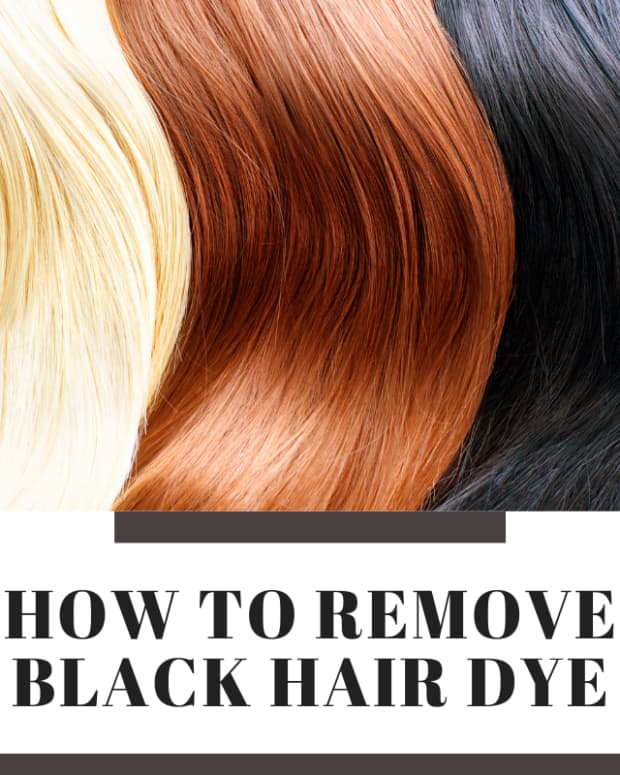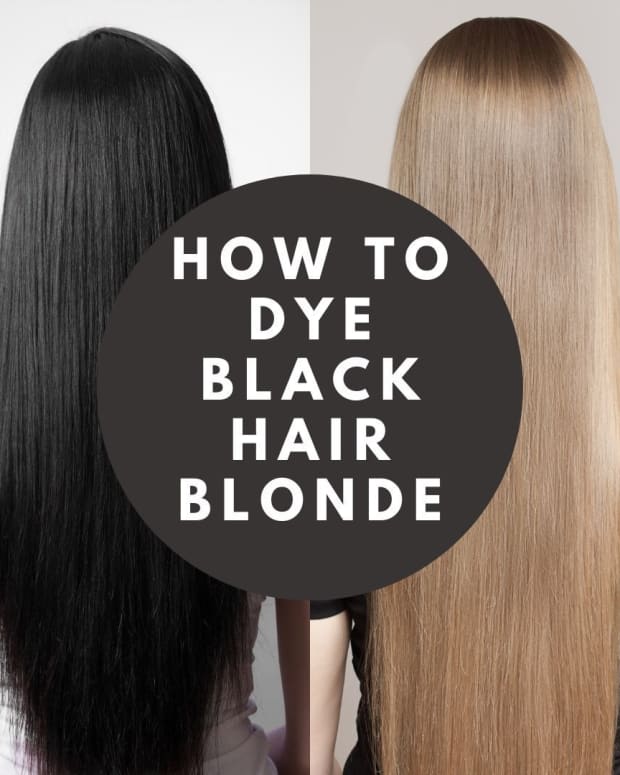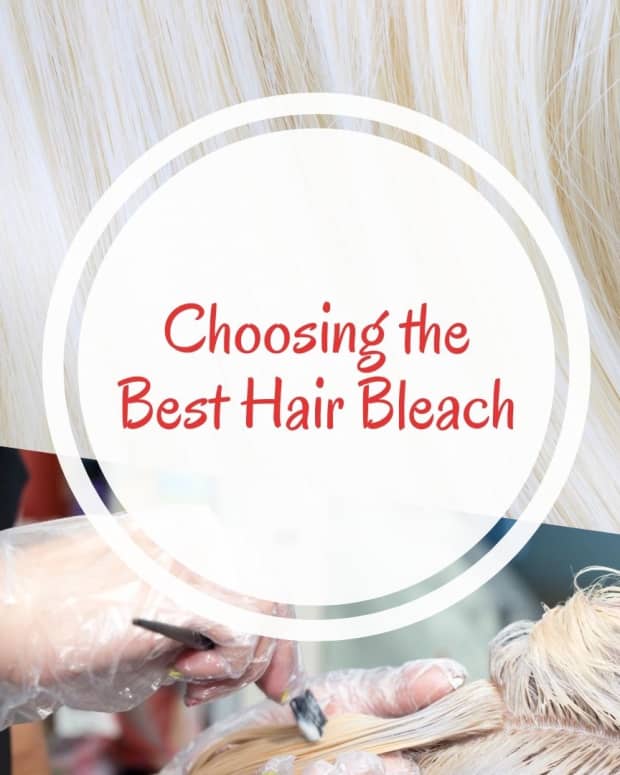How to Remove Brassy Tones From Bleached Blonde Hair
My varied interests include writing, health issues and policy, beauty, makeup, veganism, autism, and running.
Bleaching Your Hair at Home?
I'm assuming you have found this page because you've bleached your hair wanting to go blonde, but instead of going blonde, your head has turned either orange, yellow or looks a little like a tabby cat—a whole shebang of colours with white roots, orange mid-lengths and brown ends? It's ok, I've been where you are and I feel your pain!
Seeing as it's likely too late to help you before you've made a minor mess on your head, let's see if I can help you rectify it.
The 3 Most Common Hair-Bleaching Mistakes
- Orange Hair
- Yellow Hair
- Tabby Cat Hair
Before You Bleach
Before we get into fixing the faux pas, let's go over some basics about bleaching your hair. Even if you've already made the mistake, it's never too late to learn why it happened and how to prevent it next time.
Using Developer
Firstly, it's always a good idea not to use too high of a developer on your hair. 40vol can be exceptionally damaging on the hair, especially to hair that requires it to stay on for a longer amount of time. It is far kinder for your hair to use a 30vol or even 20vol, depending on your natural hair colour. You will still get the results you want—without frying your tresses—but it will take additional stages.
Bleaching Virgin Hair
So, if you have started your hair escapades with virgin hair—hair that is void of bleach or hair dye—you're in luck because your issue is a little easier to fix. Your hair has likely turned orange or yellow because you haven't left the bleach on long enough. Like countless others, you probably saw the bleach starting to work, freaked out because it was turning a colour you didn't like and immediately washed it out.
Why Did My Hair Turn Orange?
Bleach needs to go through stages. Initially, it begins to lift your pigment. Depending on the colour of your natural hair, this stage can last between 20 minutes and an hour. If you have very dark hair, such as black or very dark brown, you may need to bleach it more than once.
No matter your natural colour, you're here now because it has turned orange or yellow. Orange hair will never go blonde with a toner. To cancel out the warm tones, you would need to go darker, but that's likely not what you want. So, how do you get orange hair blonde?
1. How to Fix Orange Hair
If the first bleach left your hair looking orange, you will need to bleach again. Be sure to leave at least a day in between bleaching it. Keep a close eye on your hair. Check it every 5–10 mins or so by removing a small amount from under your plastic hood/cling film, holding it near the root and tugging gently.
If your hair stretches significantly when you do this, you've gone too far and you'll need to rinse out now. If not, feel free to carry on until you reach the stage where your hair looks pale yellow—the same colour as the inside of a banana peel.
Note: If your hair still hasn't reached the desired level after your second bleach, please leave it alone. Put a good conditioner or mask through it and baby it for a few days. Adding another layer of bleach won't work at this stage, especially if you attempt to do it the same day.
Though it's not great to walk around with a hair colour you hate, try to resist the temptation to correct it immediately if you want to keep your hair! Make friends with a hat for at least a few days. Then look at your hair and decide which action to take: either another full bleach or if it's very close to the stage you desire, you may just need a bleach bath.
What's a Bleach Bath?
A bleach bath is a way of lightening your hair a shade or two. Instead of putting the regular bleach mixture un-doctored on your hair again, mix it with some shampoo and apply the mixture like shampoo.
Read More From Bellatory
This is an ideal solution—and much less damaging for your hair—for those of you who are already very close to your desired colour. You can do this more than once, but try to avoid doing it too much. While it is less damaging, it still involves bleach, so overuse will just as easily cause damage.
How to Apply a Bleach Bath
- Mix 1 part bleaching solution to 2 parts shampoo.
- Apply the bleach bath evenly to your hair.
- Give it a few minutes to settle in your hair.
- Rinse it out.
Okay, but what if you have already reached the yellow stage or you've found yourself with the tabby cat mixed effect? Read on!
2. How to Fix Yellow Hair
While yellow is the colour you are looking to achieve when bleaching your hair, be sure it is the palest yellow possible. Remember, think of the inside of a banana peel. This is the perfect colour required to ultimately reach the blonde you desire. If it isn't as pale as the inside of the banana skin, you'll need to return to the above section about orange hair.
Use Toner
If you have pale yellow hair, your hair fix is very easy. You just need to use a toner. Toners come in so many shades of blonde, from lightest ash blonde and white to champagne, pearl, and golden blonde. Pick the one you want, apply it and voila—you are done!
Try Silver Shampoo
Another way to tone your newly bleached hair is to use silver shampoo. There are heaps on the market—one of my favourites is Clean Blonde by Fudge. Toners tend to leave a lilac cast on the hair at first. However, it will fade to silver the next time you wash it and leave your hair a lovely platinum shade.
3. How to Fix Splotchy Bleached (Tabby Cat) Hair
I have bleached my hair, dyed it a multitude of colours and have arrived here—roots white, lengths patchy yellow and gold, with splotches of black and brown on the ends. I would love dearly to give you a way to resolve this problem today and end up with the blonde hair you want. However, I cannot.
Avoid Permanent Hair Dye
The tabby cat effect is almost always the result of bleaching on top of a permanent colour. The colour doesn't need to be recent either—it can be months old, and the result will always be an uneven mess. If you continue to bleach over it, you will end up losing your hair. If you desperately want to go blonde and really can't wait until the colour has grown out, you need to either cut the colour out of your hair or stick another dye on top of it.
Opt for Semi-Permanent Colour
Using a semi-permanent hair dye is always a good idea because it just coats the hair rather than penetrating the hair shaft, which is much less damaging. You can keep using semi-permanent hair dye until your hair reaches a length you don't mind cutting. Then, cut off the old permanent and let the semi-permanent fade until you're able to begin the bleaching process again to achieve the blonde you desire (if you still want it by then).
Note: You'll need to look at ash coloured hair dyes because anything with gold tones in it is just going to make things much worse. Stick to an ash colour similar to the darkest parts of your hair.
Comments
Doris James MizBejabbers from Beautiful South on June 09, 2020:
How well I know what you are writing about! My almost black hair faded out to pure white by the time I was 50 and I let it go au naturale. A couple of years ago I had a reverse frost that faded out to tabby cat. My photo shows a blonde toner, which was ok, but when I wanted to go silver, the back stayed yellow no matter what I put on it. I've been wearing it shoulder length, and it has just now gotten long enough to cut off the old color. I'm just waiting for my hair dresser to reopen his shop sometime this month after this coronavirus thing to get my shoulder-length hair cut short again.
Your advice is excellent. Tabby cat hair, I like that term, but I don't like having it.

